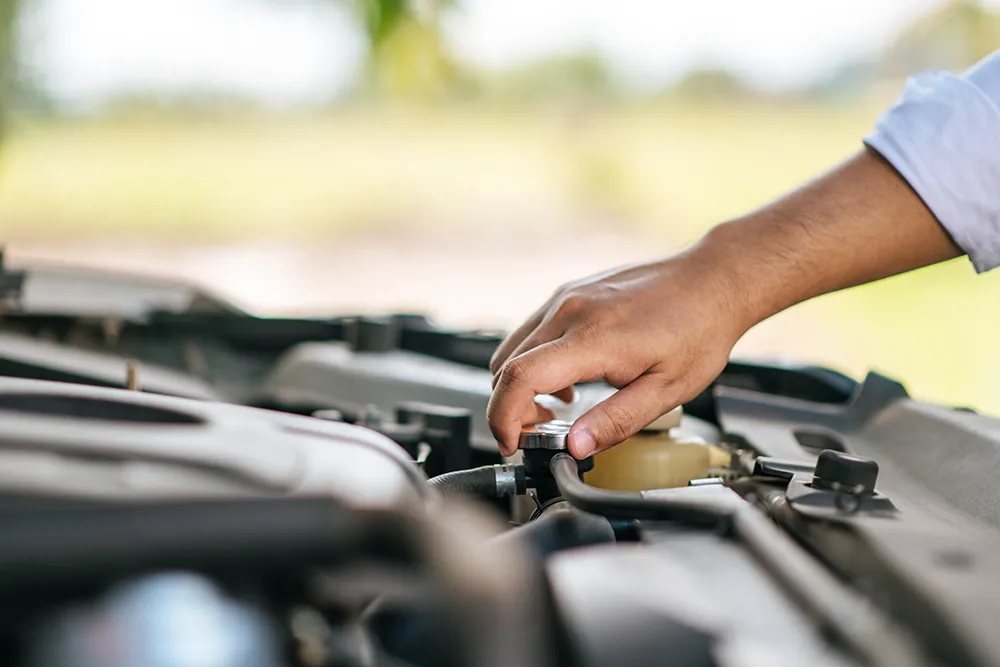Preparing your vehicle’s cooling system for winter is essential to ensure optimal performance and prevent cold-weather-related issues. Freezing temperatures can pose a risk of coolant freezing, radiator damage, and engine overheating. By winterizing your cooling system, you can safeguard your vehicle against these potential problems.
Check Coolant Levels and Concentration:
Inspect the coolant levels and ensure they are within the recommended range. Low coolant levels can lead to inadequate protection against freezing. Additionally, verify that the coolant concentration is suitable for winter conditions. Coolant should have a sufficient mixture of antifreeze to water, typically a 50:50 ratio. This mixture prevents the coolant from freezing and provides the necessary protection for your engine in cold temperatures.
Test the Coolant’s Freezing Point:
Consider testing the coolant’s freezing point to ensure it offers adequate protection in winter conditions. You can use a coolant tester or consult a professional mechanic to determine the freezing point of your coolant. If the freezing point is higher than the expected winter temperatures in your area, it may be necessary to adjust the coolant concentration or replace the coolant with one that provides better cold-weather protection.
Inspect the Radiator and Hoses:
Visually inspect the radiator and cooling system hoses for signs of damage, leaks, or cracks. Cold temperatures can exacerbate existing issues, and a weakened radiator or hose can lead to coolant leaks or even system failure. Replace any damaged components to ensure the integrity of the cooling system. Insulating the radiator or using a radiator cover can also help maintain higher operating temperatures during winter driving.
Check the Radiator Cap:
Ensure the radiator cap is in good condition and sealing properly. The radiator cap maintains system pressure and prevents coolant loss through evaporation. A faulty or worn-out radiator cap can lead to cooling system issues, including inadequate pressure and freezing of the coolant. Replace the radiator cap if necessary to maintain proper system operation.
Flush and Replace Coolant as Needed:
Consider flushing and replacing the coolant if it has not been done recently or if it appears contaminated. Over time, coolant can accumulate debris, rust, or other contaminants that can compromise its effectiveness. Flushing the cooling system removes old coolant and contaminants, ensuring optimal cooling system performance during winter. Follow the manufacturer’s recommendations or consult a professional mechanic for the appropriate coolant flush and replacement interval.
Protect the Battery:
Cold weather can strain the vehicle’s battery, reducing its capacity and potentially causing starting issues. Ensure your battery is in good condition and fully charged. Consider using a battery blanket or insulation to help maintain optimal battery performance during cold weather. Regularly check battery terminals for corrosion and clean them if necessary.
Maintain Proper Winter Driving Habits:
While not directly related to the cooling system, maintaining proper winter driving habits can contribute to the overall health and performance of your vehicle. Allow the engine to warm up before driving in cold temperatures to ensure optimal operating conditions. Avoid aggressive driving and sudden temperature changes, as they can put additional stress on the cooling system.
Winterizing your vehicle’s cooling system is essential to protect against freezing, maintain optimal engine temperature, and prevent cold-weather-related issues. Proper winterization contributes to the longevity and functionality of your vehicle’s cooling system, providing peace of mind during the winter months.

